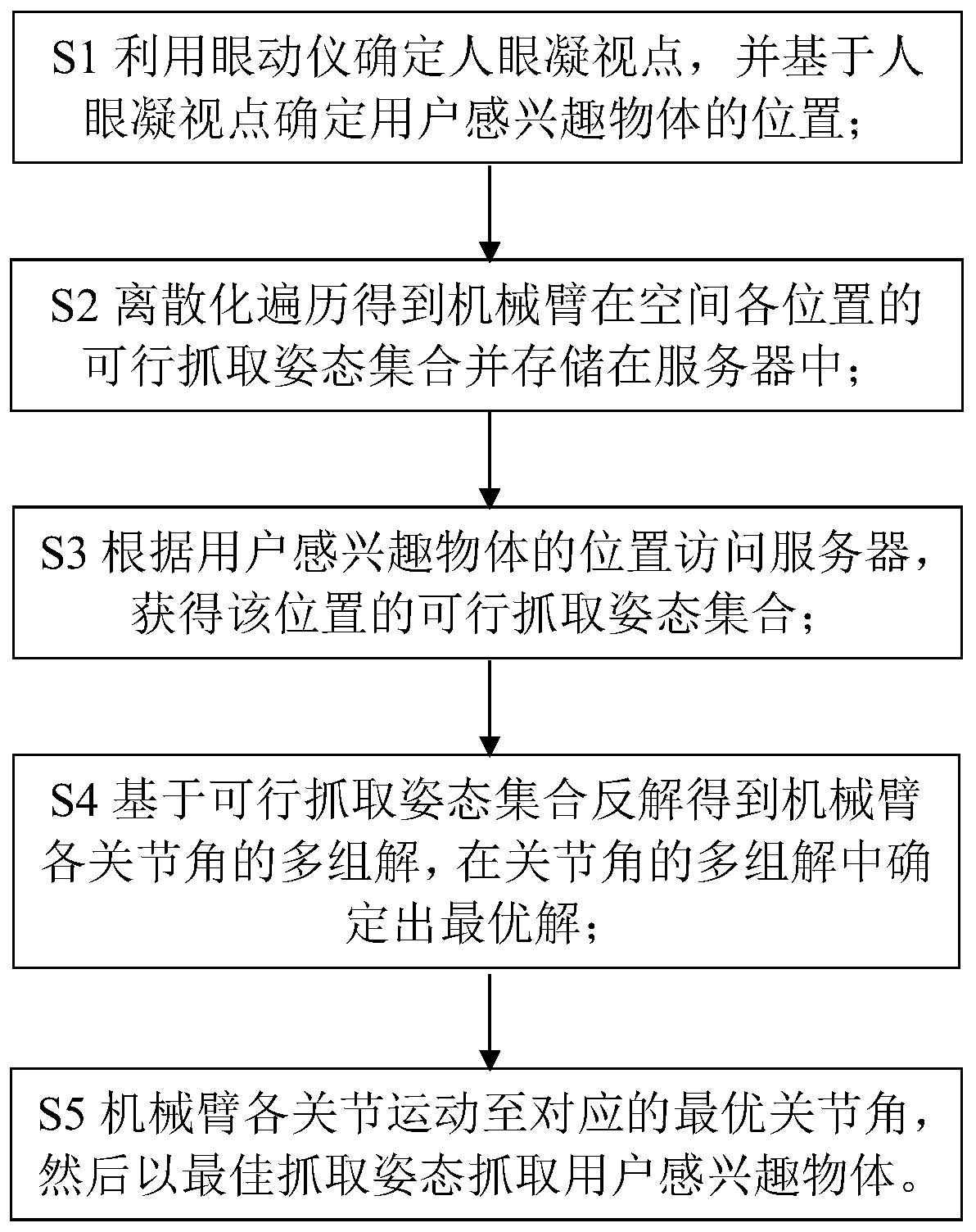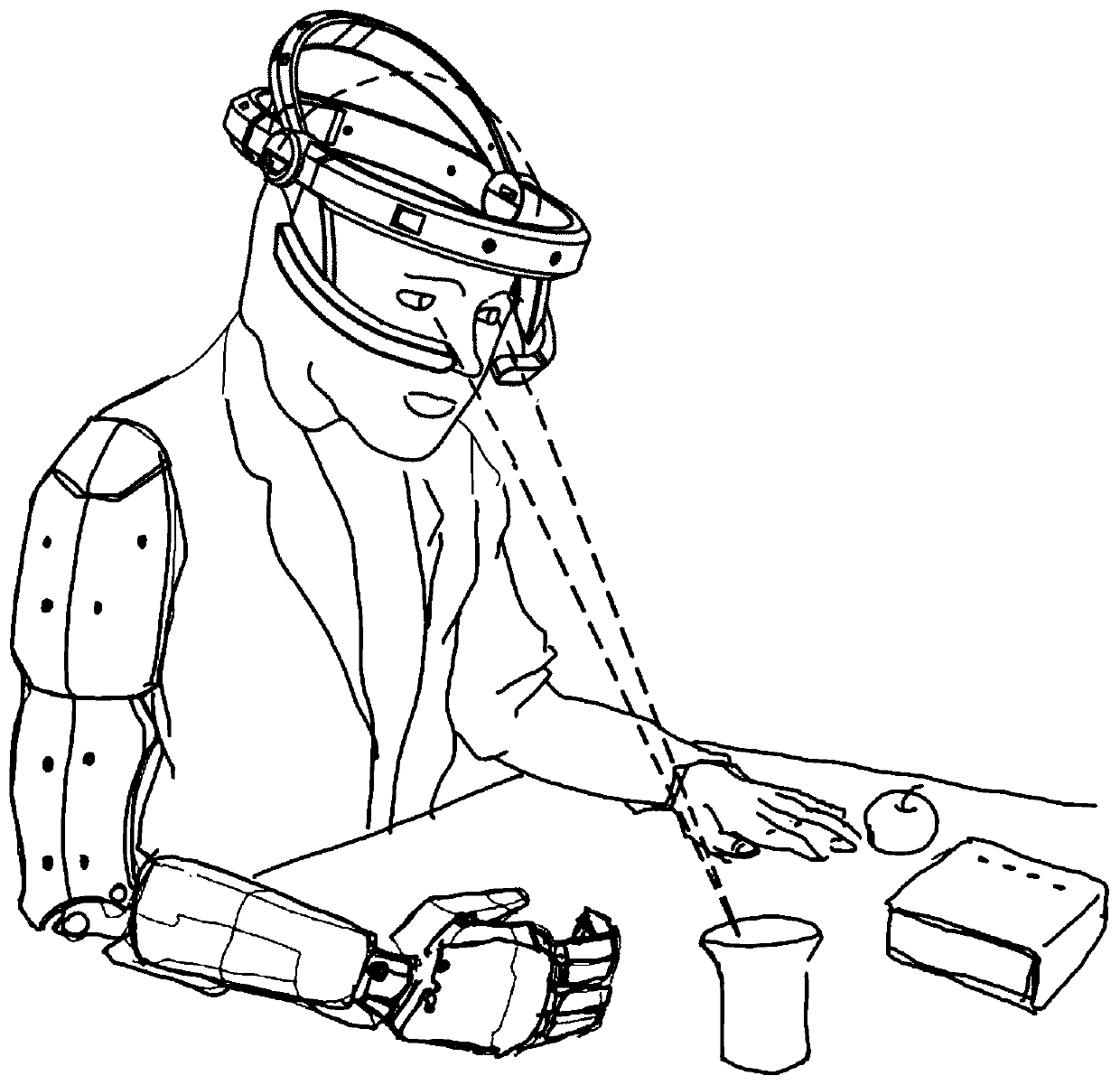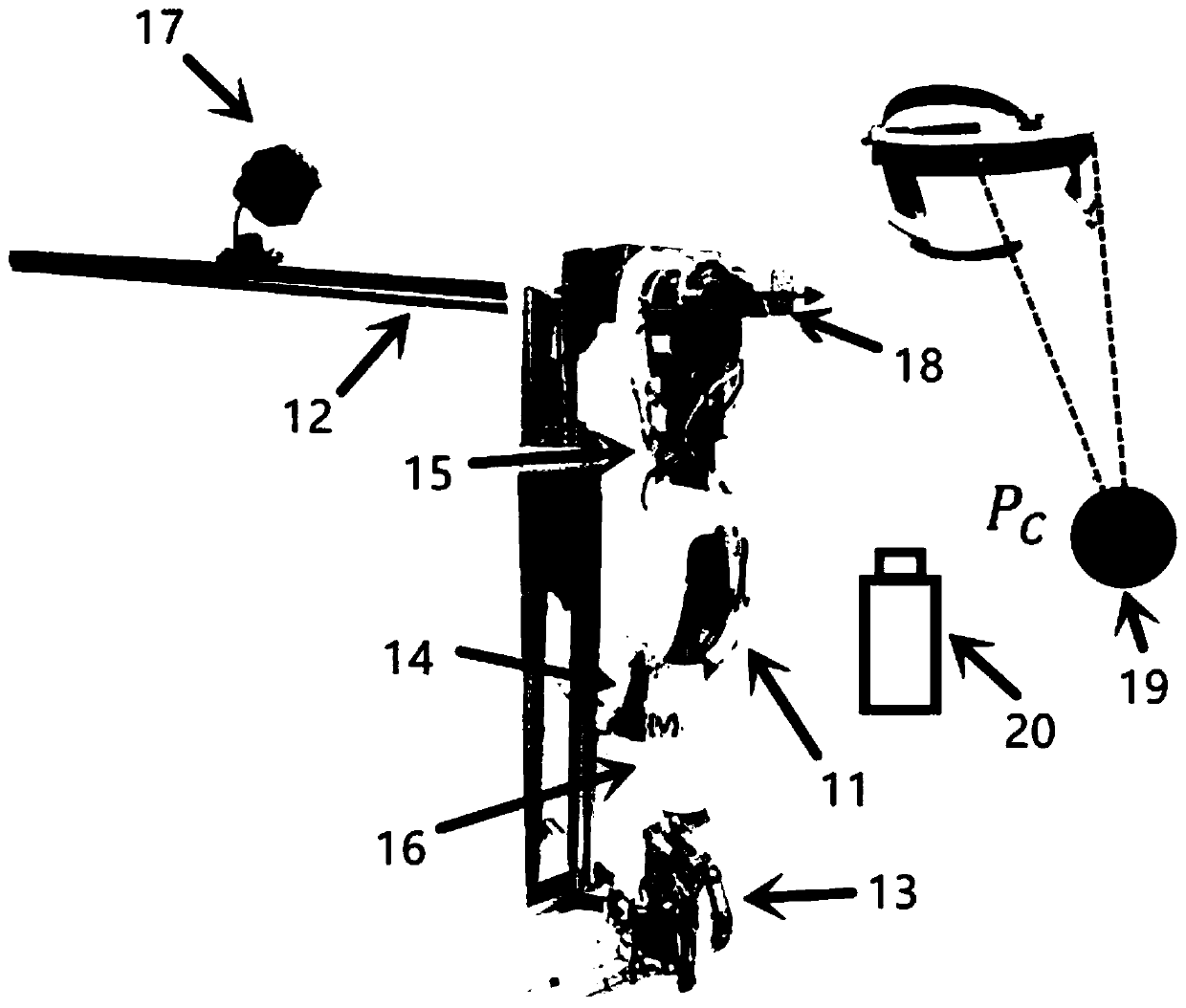Hand-eye coordination grabbing method based on human eye gaze point
A hand-eye coordination and gaze point technology, which is applied to manipulators, program-controlled manipulators, manufacturing tools, etc., to achieve the effects of convenient operation, accuracy assurance, and efficiency improvement
- Summary
- Abstract
- Description
- Claims
- Application Information
AI Technical Summary
Problems solved by technology
Method used
Image
Examples
Embodiment Construction
[0053] In order to make the object, technical solution and advantages of the present invention clearer, the present invention will be further described in detail below in conjunction with the accompanying drawings and embodiments. It should be understood that the specific embodiments described here are only used to explain the present invention, not to limit the present invention. In addition, the technical features involved in the various embodiments of the present invention described below can be combined with each other as long as they do not constitute a conflict with each other.
[0054] Such as figure 1 As shown, the embodiment of the present invention provides a hand-eye coordination grasping method based on the gaze point of human eyes, which includes the following steps:
[0055] S1 uses the eye tracker to determine the gaze point of the human eye, and determines the position of the object of interest to the user based on the gaze point of the human eye;
[0056] S2...
PUM
 Login to View More
Login to View More Abstract
Description
Claims
Application Information
 Login to View More
Login to View More - R&D
- Intellectual Property
- Life Sciences
- Materials
- Tech Scout
- Unparalleled Data Quality
- Higher Quality Content
- 60% Fewer Hallucinations
Browse by: Latest US Patents, China's latest patents, Technical Efficacy Thesaurus, Application Domain, Technology Topic, Popular Technical Reports.
© 2025 PatSnap. All rights reserved.Legal|Privacy policy|Modern Slavery Act Transparency Statement|Sitemap|About US| Contact US: help@patsnap.com



